Workbench clamp for perfect dovetails
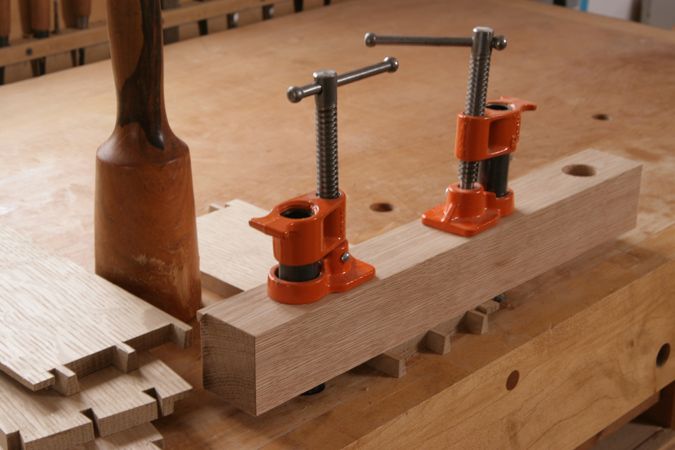
A simple but effective clamp for chopping dovetails.
The biggest hassle of hand cut dovetails is chopping out the waste between the pins and tails. Getting a nice, straight baseline at the shoulders is critical to a tight-fitting joint. Simply chopping to a line is difficult because the chisel tends to wander past the line leaving a ragged gap.
My favorite aid has always been a wooden handscrew. These archaic looking clamps are great at clamping securely along the entire work piece and their wooden jaws make a great reference surface for chiseling.
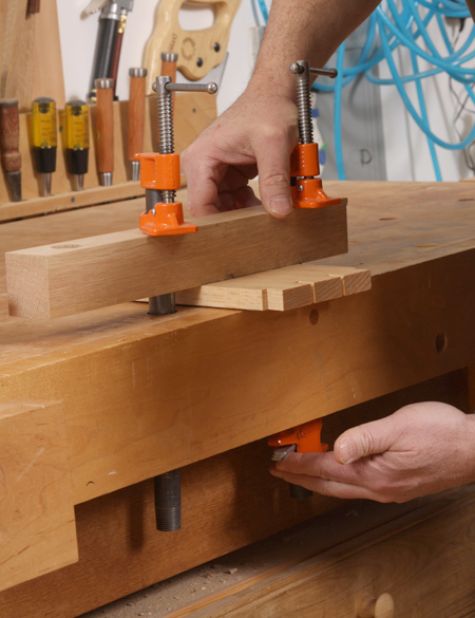 The only problem with handscrews is that they are difficult to clamp to a workbench with a front apron. I’ve been toying with an alternative solution for a while and I finally put it to use this weekend.
The only problem with handscrews is that they are difficult to clamp to a workbench with a front apron. I’ve been toying with an alternative solution for a while and I finally put it to use this weekend.
The clamp I came up with is so simple that I know I’m not the first to think of it, but it works pretty well. It is nothing more that a block of wood with a holes drilled into it that is attached to the bench top with short pipe clamps. The most painful part was drilling holes into my bench top.
To use the clamp, all I need to do is slip off the end jaws and slip the pipe clamps into the holes in the bench. I use a work piece to support the clamp at the right height as I reattach the pipe clamp ends.
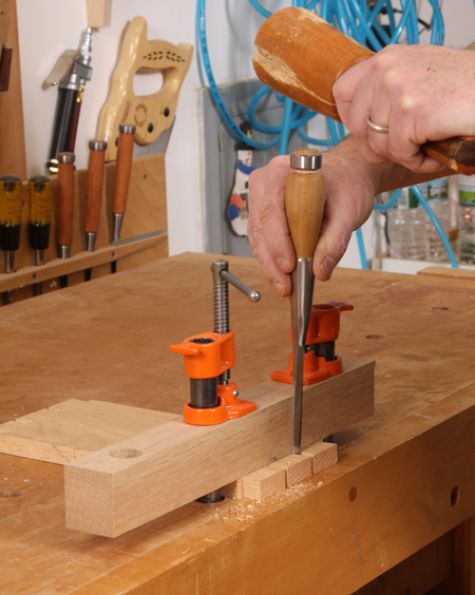 Then it’s just a matter of aligning the baseline of the work piece to the clamp and tightening it in place.
Then it’s just a matter of aligning the baseline of the work piece to the clamp and tightening it in place.
I left the clamping fence long and drilled a third hole for wider work, but I’m going to wait until I need it before drilling another hole in my bench top!

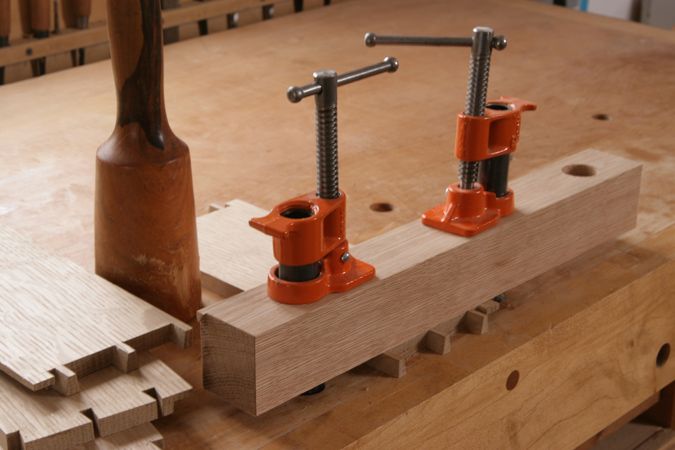
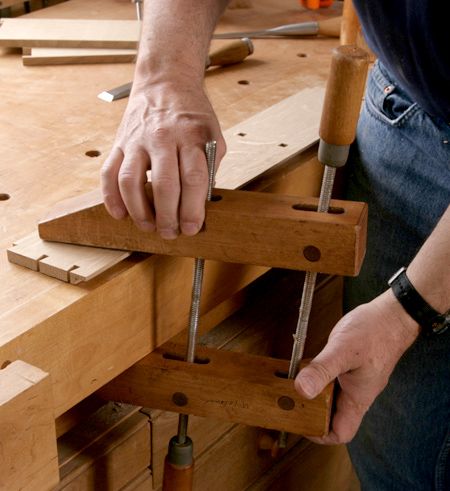

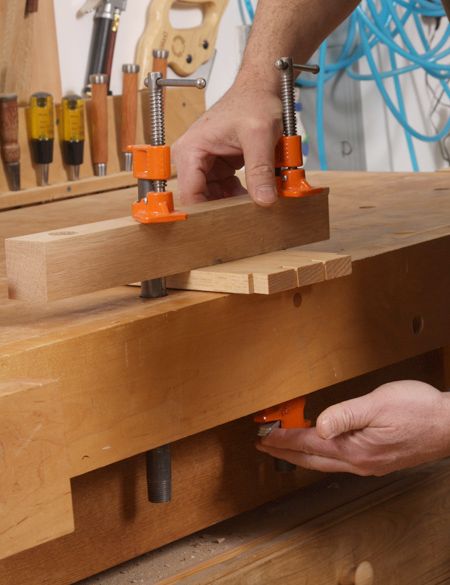
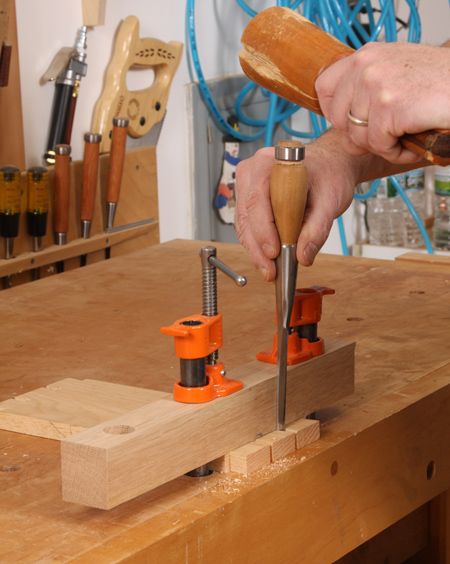


















Comments
Clever -- what did you use to drill the hole in your workbench?
I used a forstner bit to drill the holes because that's what I had around the shop, but it was difficult to keep the holes straight. A better way would be to use a large brad-point bit in conjunction with a guide block clamped to the workbench.
-Mike
I would have to drill new hole in my bench to utilize this jig, or enlarge a couple of the existing ones. I'm not sure I would use it enough to warrant that. Great idea though.
rsetina- Yep, understood. I had been thinking of this for a long time before I got the nerve to drill into my bench top. GIves you a queasy feeling.
-Mike
not sure of the outside diameter of a 1/2" pipe clamp but it may fit in an existing 3/4" dog hole. if it did you probably wouldn't have to drill any holes if you have round dogs.
@trchrind,
I thought about that, too, but unfortunately, it doesn't quite work. 1/2" pipe has a nominal outside diameter of 0.840", significantly more than 3/4".
-Steve
I use the wood screw method,and chop horizontally with my material locked vertically in a shoulder vice.
k
I have added a wide (36") vice to the back of my bench for this that uses two clamp screws and a method of adjusting the curve of the outer jaw so that it clamps evenly across its whole width. You need to use a backing board behind the work to stop tear out at the rear of the joint. Robert Ingham describes lovely jigs for marking out and cutting dovetails in his book "Cutting Edge Cabinetmaking." that I would also reccomend. It is easy to drill holes in bench tops with a hand brace and a sharp auger bit.
are you really 'chopping' into the bench - or do you reverse the workpiece?
tooltips- Good question. You assume correctly that I only chop half way through the joint before flipping it over and chopping from the other side. -Mike
You could use some 5/8" Threaded rod and make wooden handles to turn the nuts. That way it could be used with existing 3/4" bench dog holes.
I like your pipe clamp vise. I can see where it would be useful in cutting a board with a jig saw or handsaw as well as for dovetails.
I have used something similar to clamp wooden bowls that I carve and sand. I used 8 inch x 1/2 inch bolts with wing nuts to make my "Chinese vise".
Why not use holdfast? They are much more versatile. A pair for $32 from toolsforworkingwood.com. Plus there are other uses for the 3/4" hole required.
I found an even simpler method to use existing dog holes: use inexpensive F-style clamps, remove the fixed end and insert. Depending on the manufacturer and the width of the bar, this may work without any additional clamp modification. If the clamp will not stay in the dog hole. simply insert a pin or nail in the hole that held the fixed end and it will work perfectly!
Mike, This is a VERY clever idea. Thank you for sharing this.
As much as I revere benches as consumables, I too would feel a little queasy drilling into my own bench for this. However, I DO think this one would be worth it. I'd have to research other possible alternative clamps first though. Additionally, I prefer universally workable ideas that I can take to other workshops I happen to be in.
Note: If you would rotate your clamp heads 180 degrees(facing away from your work), you'd have as much holding power but gain more room between the clamps for your hands to hold the chisel.
Log in or create an account to post a comment.
Sign up Log in